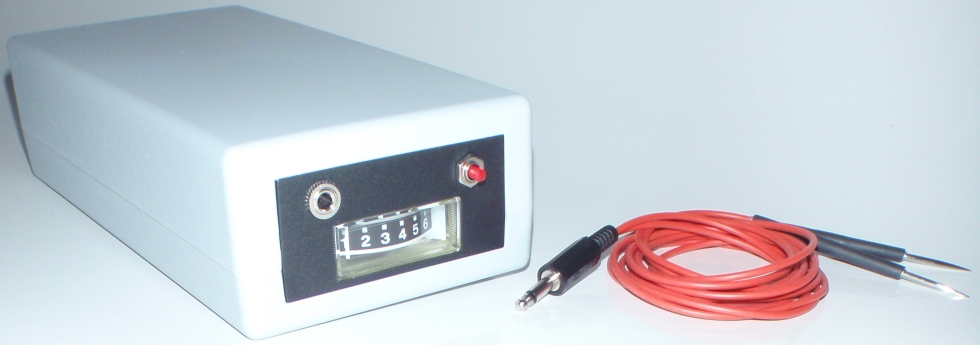
"RZG
1"
Generator for use in Forensic Pathology
Characterisation /
References:
The examination
of the electrical excitability of mimic muscles is a non
temperature-based method within a compound method
for estimation of the time since death in the early postmortem period.
 Henssge C,
Madea B, Gallenkemper E. Death
time estimation in case work - II. Interation of different methods.
Henssge C,
Madea B, Gallenkemper E. Death
time estimation in case work - II. Interation of different methods.
Forensic
Sci Int
1988; 39: 77-87.
 Claus Henssge
and Burkhard Madea.
Integration of different methods in casework. In:
Claus Henssge
and Burkhard Madea.
Integration of different methods in casework. In:
Estimation of the time since death in the early
post-mortem
period; ed. B. Knight;
2nd Edition (2002) Arnold London; and
ed. B.
Madea;
3rd Edition (2015) Arnold London.
The efficiency of applying the method in casework is clearly
demonstrated in
a field study.
 Henssge C et
al. Experiences with a
compound method for estimating the time since death. II. Integration of
non-temperature-based methods.
Henssge C et
al. Experiences with a
compound method for estimating the time since death. II. Integration of
non-temperature-based methods.
Int
J. Legal Med
2000: 113: 320-31.
"RZG
1" Generator for use in Forensic Pathology:
- one
button for releasing the electrical impulses
- device switch on / off (backside)
- one jack for batteries recharging (backside)
- The special output to needle electrodes is constant-current
rectangular
impulses of 30 mA, 10 ms duration at a repetition rate of 50 per second.

 price:
EUR 498,90 (approximately ~ 479,00 US Dollar)
price:
EUR 498,90 (approximately ~ 479,00 US Dollar)
 scope of
delivery:
generator RZG 1 (accumulator includet), needle electrodes and
connecting-cable,
battery charger
scope of
delivery:
generator RZG 1 (accumulator includet), needle electrodes and
connecting-cable,
battery charger
 delivery
period:
approximately 2-3 weeks
delivery
period:
approximately 2-3 weeks
 size:
3,15 x 1,73 x 6,3 inch (80 x 44 x 160 mm)
size:
3,15 x 1,73 x 6,3 inch (80 x 44 x 160 mm)
 weight:
450g
weight:
450g
Computersoftware:
A particular
computer program assists the
use of the compound method at the scene including the temperature-based
nomogram method and
non-temperature-based methods/criteria (Development of rigor -
Lividity -
Mechanical excitability of skeletal muscle
- Electrical excitability of mimic muscles - Chemical excitability of
the iris)
 ...
for more information and prices.
...
for more information and prices.
Source
of supply:
j.p. - electronic
Jürgen Peschke
Bebelstraße 49
39116 Magdeburg
Germany
Fax:
+49-(0)3222-1505336
Magdeburg,
2025 January 01.

![]() Henssge C,
Madea B, Gallenkemper E. Death
time estimation in case work - II. Interation of different methods.
Henssge C,
Madea B, Gallenkemper E. Death
time estimation in case work - II. Interation of different methods.![]()
![]() Henssge C et
al. Experiences with a
compound method for estimating the time since death. II. Integration of
non-temperature-based methods.
Henssge C et
al. Experiences with a
compound method for estimating the time since death. II. Integration of
non-temperature-based methods.